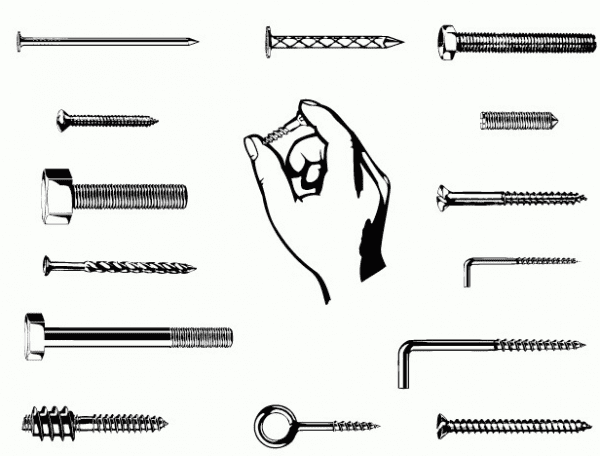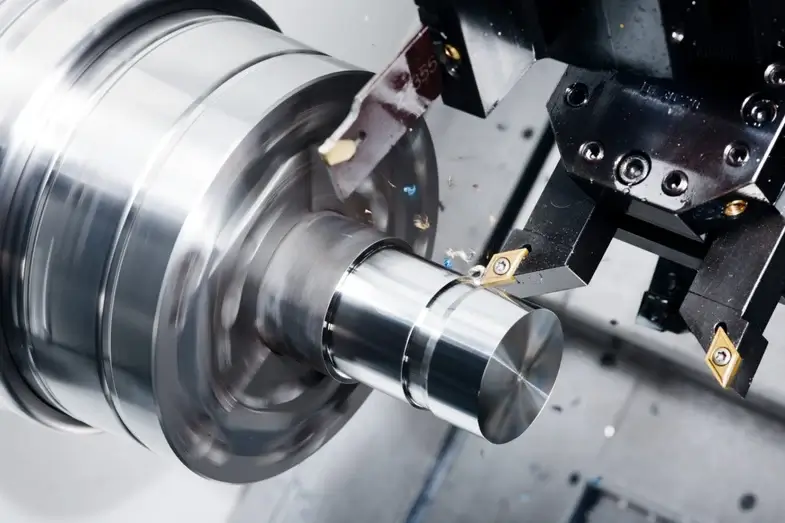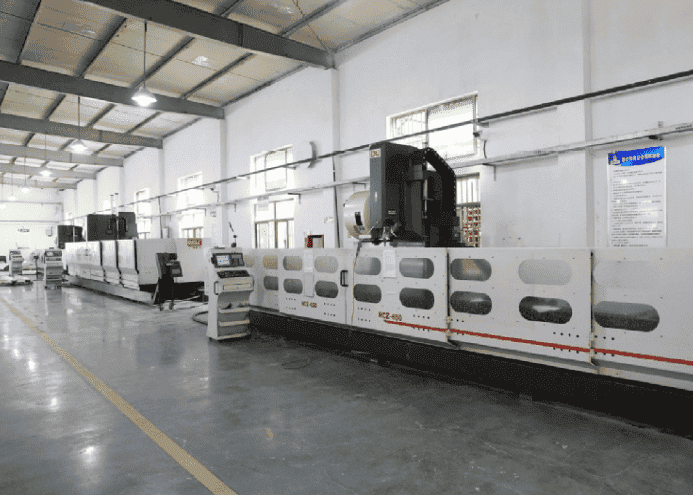Iron nails are all carbon steel, without threads, they are directly screwed in with a hammer, one-time use, and iron nails will not be pulled out after nailing. The screws are generally coated with a layer of zinc on the outside of carbon steel, with threads, which can be screwed in with a screwdriver and can be pulled out when needed.
There are essential differences between nails and screws:
-
- There are many kinds of nails, such as round iron wire nails, cement nails, corrugated nails, elbow nails, and so on.
- The types of screws are even more, such as machine screws, which generally need to match with nuts. Pan head screws, common self-tapping screws, thread-cutting screws, etc.
- A nail has a tip and is hit into the target with a hard object such as a hammer, while a screw is rotated into the target or nut with a screwdriver, etc.
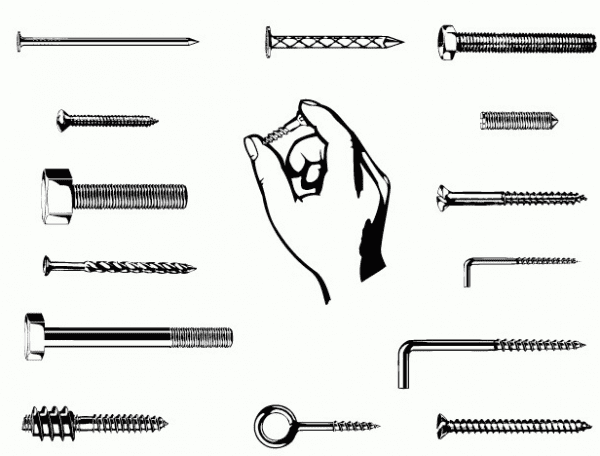
Nail Size Chart
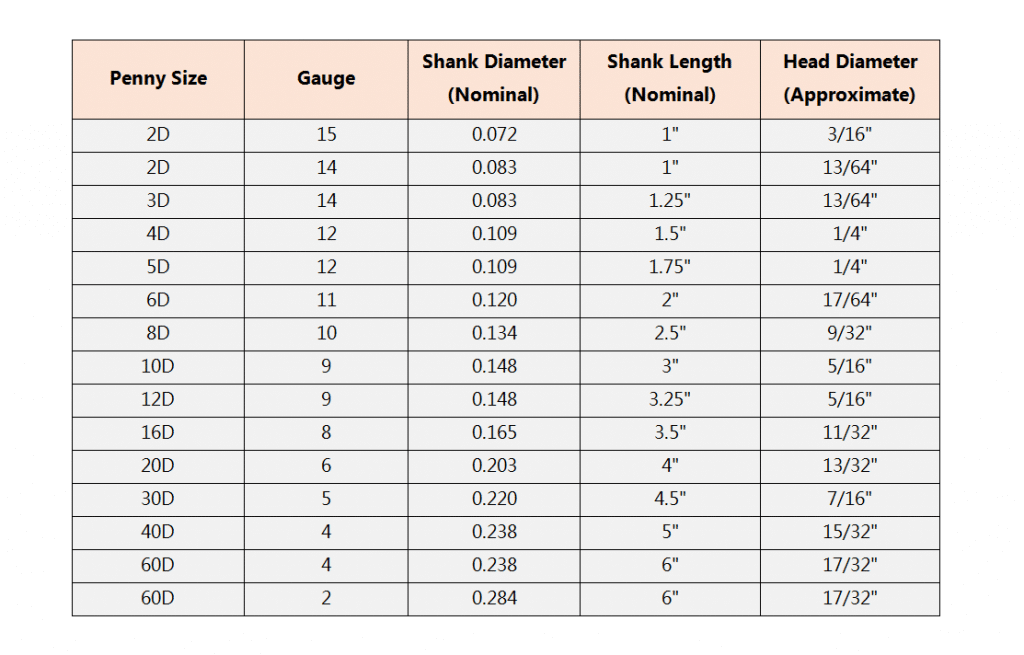
Why is “Penny” Used as A Term for Nail Size?
The word penny originated in England as a measure of the length of a nail. One of the reasons for using penny size as a term for nail length is price.
100 nails of a certain size cost 10 pence or 10D (“D” is the British name for a penny). Another reason has to do with the weight of 1,000 nails, D used to be short for one pound.
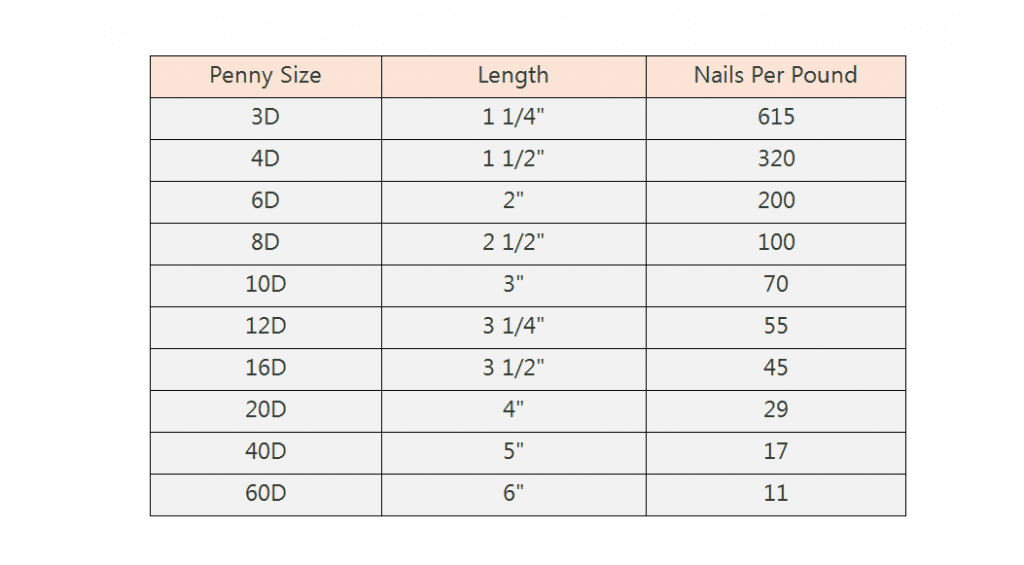
People have been using nails for about 5,000 years. Nails are known because ancient Iraq (UR) used nails to fasten steel.
1,500 years ago, people made nails by hand by pulling thin strips of metal and punching a series of holes of different sizes in the metal disk. In 1741, England employed 60,000 people to make nails.
The first nail-making machine was invented by the American Ezekiel Reed. In 1851, Adolphe F. Brown of New York invented the cable-nailing machine. From then on, nails could be produced in large quantities at low prices.
What is A 16d Common Nail?
The connector is usually stamped to indicate the type of fastener required to install the connector.
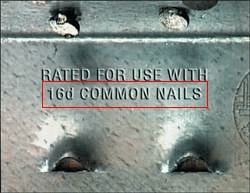
Sizes of nails and nails are specified by their length and range from 13 mm to 150 mm U.S. system of measurement for common nails is the “penny” abbreviated “d”. (e.g.8d=64 mm,10d=76mm,16d=89mm). Large nails are called spikes and range from 100 mm to 350 mm in length.
Types of Nails and Uses
Steel Arranging Nails(ST)
Features of steel arranging nails: Novel design, unique, with quick effect, good engineering quality, widely used characteristics, is the ideal replacement for common round nails.
Uses: Furniture making, sofas, wooden boxes, and various wood products.
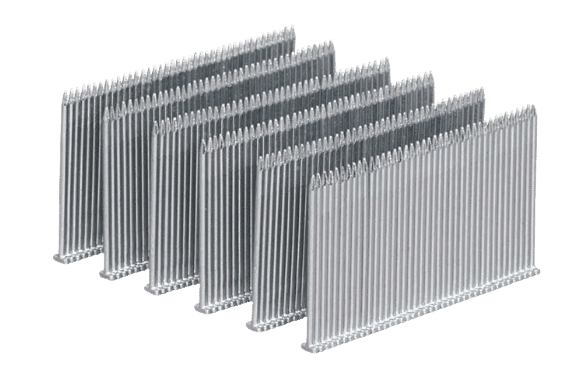
Code Nails
K nail, code nail, and N nail uses:
Furniture manufacturing for sofas and chairs, sand, and leather. Upholstery is used for ceilings, sheets, etc. Wooden cases are used for outer sheets.
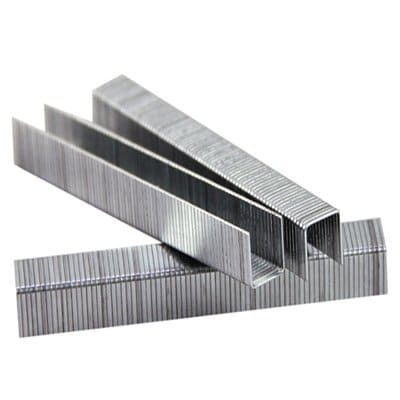
Concrete Steel Nails
It is similar in shape to a round nail, with a slightly thicker head. But cement steel nail is made of high-quality steel, have the advantage of hard, bending resistance, and can be directly nailed into concrete and brick walls. Common specifications are 7~35mm.
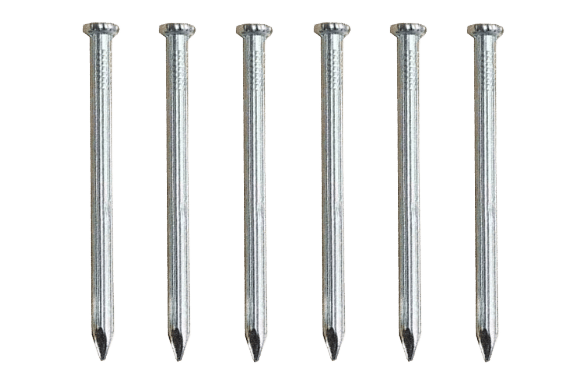
Wood Screw
Also known as a Wood thread screw. It is mainly used in the combination of metal and wooden materials.
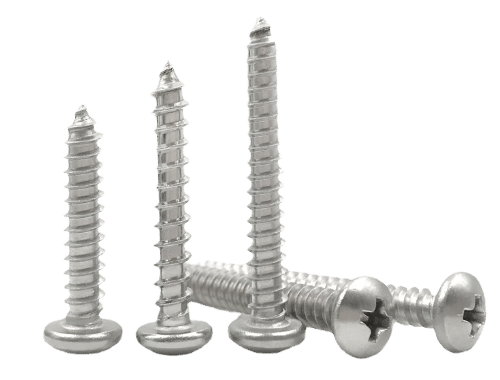
Twist Nail
The body of the nail is like a twist, the head is round and flat, with a cross or a word head, and the bottom is pointed. The Twist nail’s nail force is very strong. Suitable for drawers, wooden ceiling suspenders, etc., some need a strong nail force.
The common specifications are from 50 to 85mm, and there are various specifications.
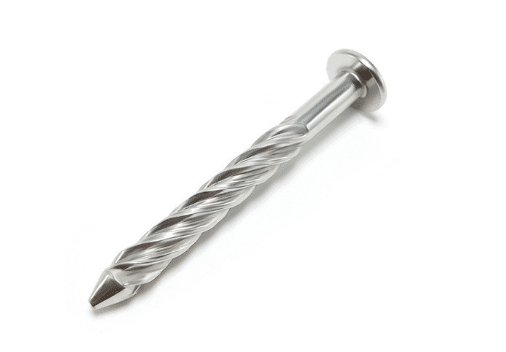
Straight Nail
Uses Upholstery plywood, and stripboard mounting. The furniture manufacturing industry of wood fittings rattan and other steel nails: made of high quality 45# carbon steel, unique design, reasonable structure, exquisite appearance, suitable for light wood keel connection.
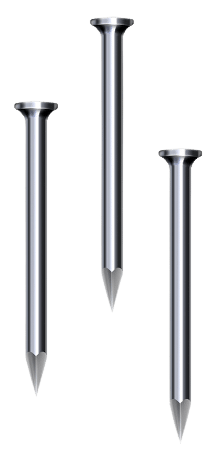
Wire Nail
It’s a nail with pointed ends and a smooth surface in the middle. Wire nails are easier to incorporate and secure wood than other nails. Its common specifications are 25~120mm.
Self-Tapping Screw
The self-tapping screw has deep threads, high hardness, and low price, and can combine two metal parts better than other nails. Usually used indoors and windows, iron sheet.
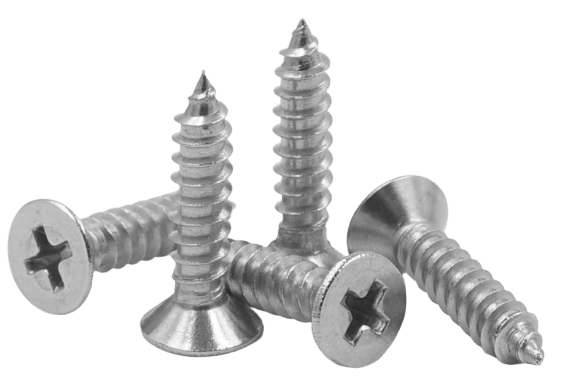
Shoot Nail
The shape of the shoot nail is similar to the cement nail, The difference between them is that the shoot nail needs to be used with the gun. Relatively speaking, nail fastening is better and more economical than manual construction.
It is also easier to construct than other nails. Shoot nails are mostly used in wooden materials.
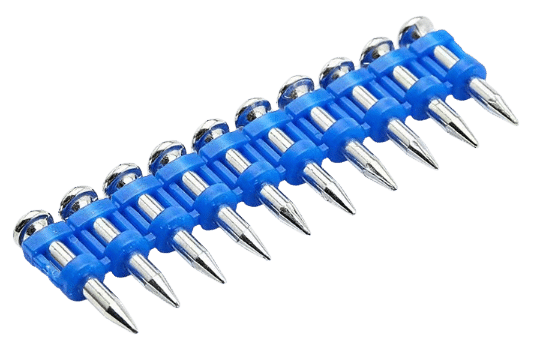
Bolts
The Bolts manufactured by our company are suitable for various wall and ground anchoring building accessories and objects.
Stapling Nail
Used for binding paper documents, generally made of iron or copper, plated with nickel or nickel-zinc alloy to prevent rust.
Special Steel Nails
Special steel nails have high strength and can be directly nailed into ordinary brick walls, 260#-280# cement mortar blocks, silicate, and other structures. They are ideal construction nails.
Saddle Nail(round steel tape U nails) uses: Mainly used for fixing metal plate nets, wire meshes, and indoor and outdoor hanging wires, and can also be used for fixing steel wires for bundling wooden boxes.
Common round nails are generally only used for construction structures, rough parts, and woodworking.
Shoot nails are mainly used in joinery and wood finishing works.
Floor nails are used for floor laying.
Concrete steel nails are used for the connection of cement walls, ground, and surface materials.
Decorative nails are used to fasten soft packages.
Three Basic Methods of Nailing
Face Nailing: Strongest of three methods.
End Nailing: Much weaker and used primarily to hold framing members in alignment until gravity forces and sheathing are applied to strengthen the connection.
Toeing Nailing: Correctly done, can be almost as strong as face nailing.
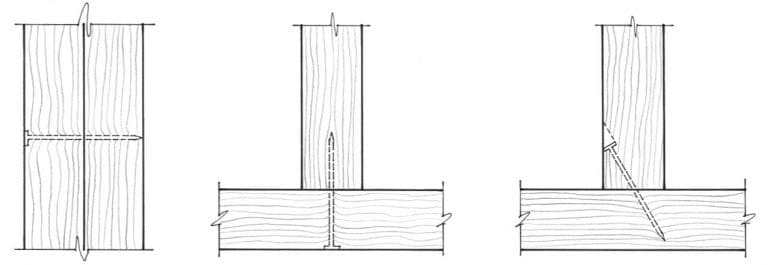
The length of the nail chosen should be 2.5 to 3 times the thickness of the work being nailed. To increase the firmness of the connection, there should be an angle when nailing, forming a dovetail oblique nail combination to produce a hook effect.
When the wood is nailed, the long end should be sawed first to reduce the splitting of the wood.
When nailing the hardwood nails, the nail holes should be drilled first, and the hole diameter should be slightly smaller than the nail diameter.
At least two standard nails should be driven into each connection surface to ensure the connection is firm.
